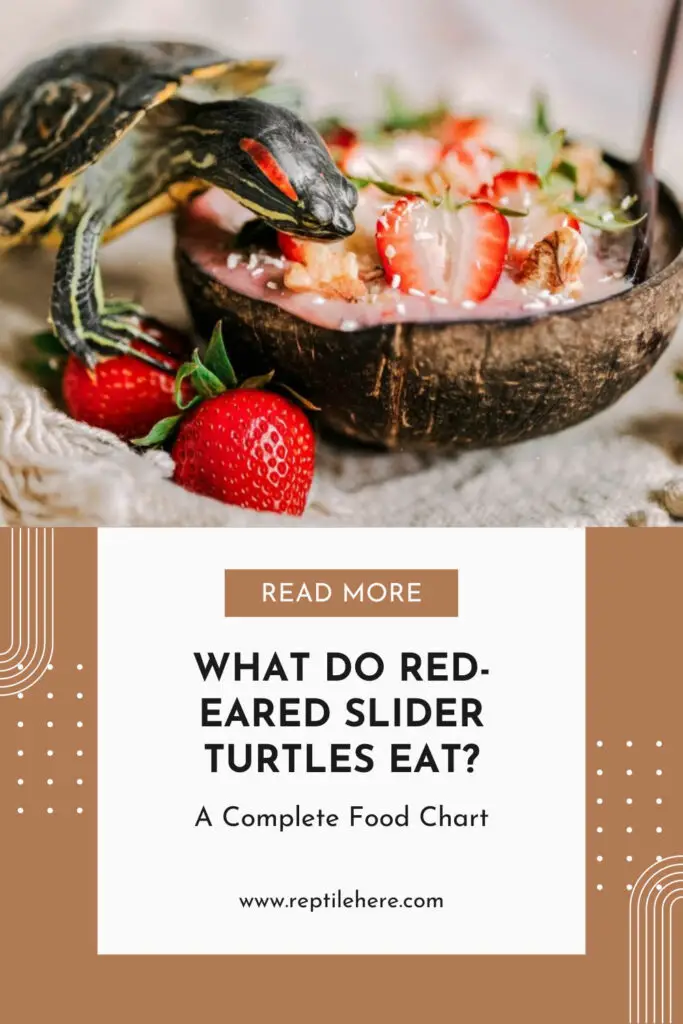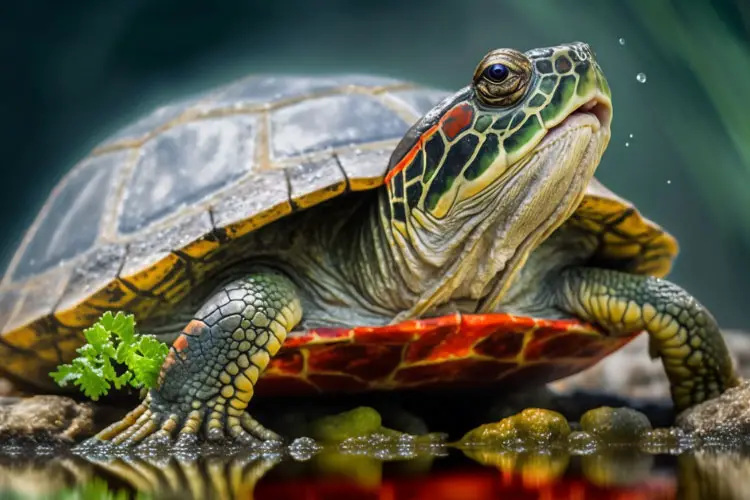What Do Red-Eared Slider Turtles Eat? A Complete Food Chart
A healthy balanced diet ensures the healthy growth of your red-eared slider and keeps off various illnesses. If you’re a new turtle owner, you’re probably unsure of what foods to give your pet turtle and which ones to avoid. This guide will answer all your questions regarding your pet turtle’s diet.
What do red-reared slider turtles eat? The red eared sliders are omnivorous, meaning their balanced diet includes plant and animal materials. They feed on plant materials such as leafy greens, aquatic plants, and vegetables. And they take animal proteins such as earthworms, mealworms, silkworms, aquatic snails, shrimp, etc.
The following guide will teach you everything you need to know about your red-eared slider turtle diet. You’ll learn the various vegetables, fruits, live food, and other types of food to give your pet turtle. Plus, you’ll learn what foods to avoid or limit for the healthy growth of your pet turtle.
What do red-eared slider turtles eat?
Contents
Red-eared sliders in the wild are opportunistic omnivores and feed on aquatic vegetation as well as small fish and decaying material, including dead fish and frogs.
The baby red-eared sliders are mainly carnivorous and only become omnivorous like their adult relatives as they grow older.
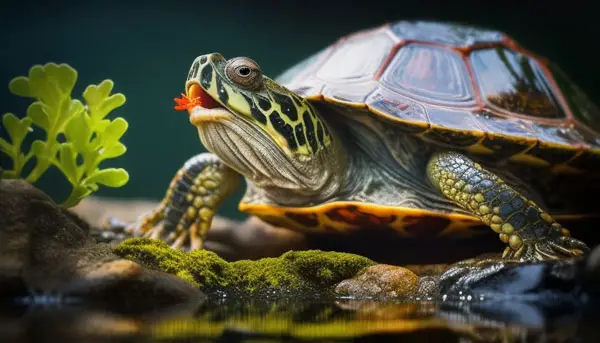
The diet for wild species isn’t much different for red-eared sliders and turtles as pets. You can feed them both plant and animal materials.
Be sure to give your slider turtle a VARIETY of foods. This will keep it from getting bored by the same type of food and refusing to eat.
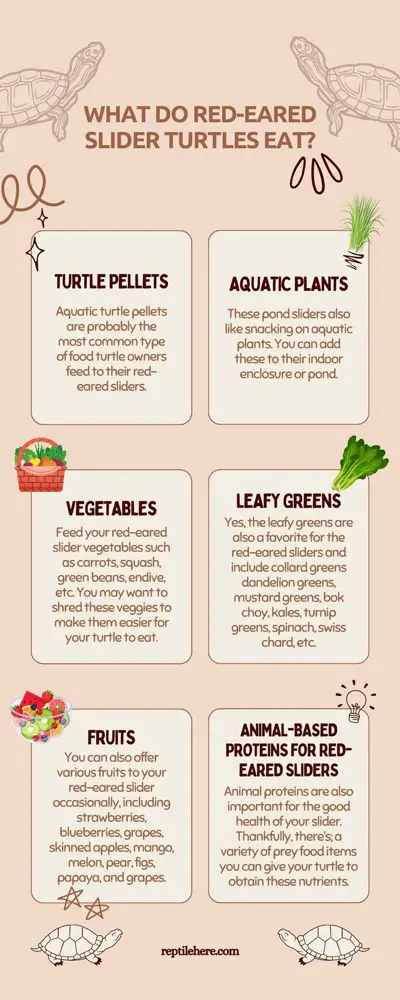
Here’s the list of foods a pet red-eared slider turtle eats:
Turtle pellets
Aquatic turtle pellets are probably the most common type of food turtle owners feed to their red-eared sliders. They provide your turtle with a good mix of minerals and vitamins.
However, they should only make up to around 25% of your turtle’s diet, and not more than that. The rest of the diet should be made up of the foods we’ve described below.
Aquatic plants
These pond sliders also like snacking on aquatic plants. You can add these to their indoor enclosure or pond. However, be careful which aquatic plants you feed your pond slider as some of them are toxic and therefore unsafe for your turtle.
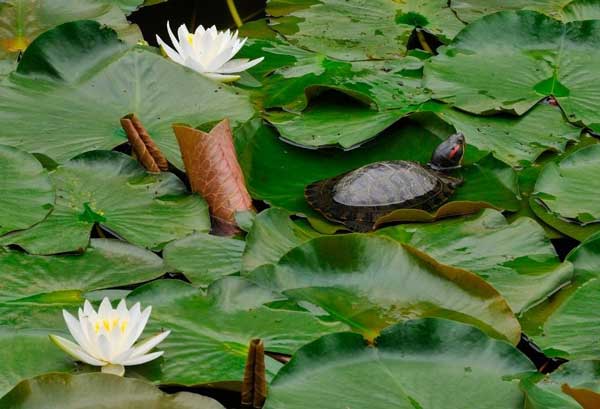
Consider submerged plants such as anacharis, water lettuce, water hyacinth, duckweed, frog-bit, Azolla, water lilies, duckweed, Elodea, etc.
Vegetables
Feed your red-eared slider turtles vegetables such as carrots, squash, green beans, endive, etc. You may want to shred these veggies to make them easier for your turtle to eat. This is epically true if you own a smaller turtle.
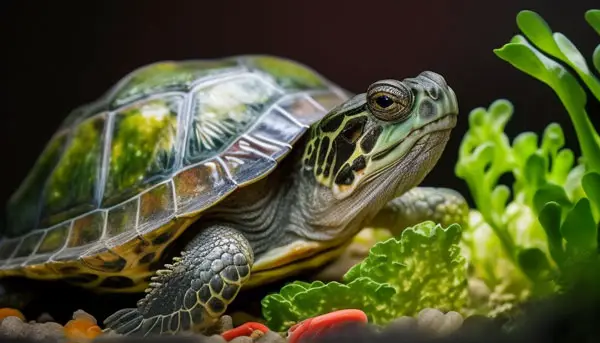
Leafy greens
Yes, the leafy greens are also a favorite for the red-eared sliders and include spinach, collard greens, dandelion greens, mustard greens, bok choy, kales, turnip greens, swiss chard, etc.
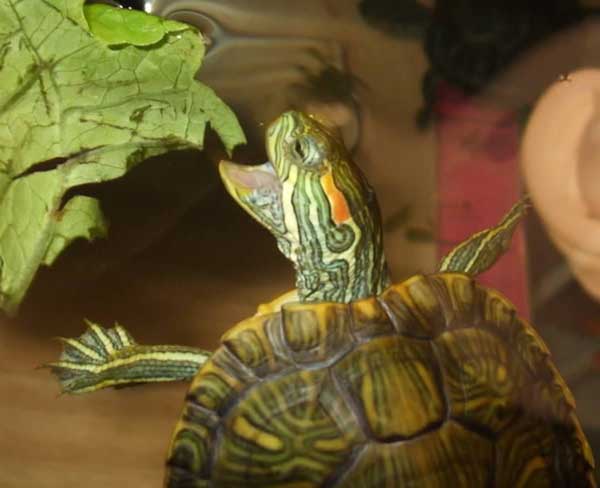
Avoid feeding iceberg or head lettuce to your pet turtle as it contains plenty of water which holds quite little nutritional value. Choose leafy green food varieties that contain the appropriate phosphorous and calcium levels.
Fruits
You can also offer various fruits to your red-eared slider occasionally, including blueberries, strawberries, grapes, skinned apples, mango, melon, pear, figs, papaya, and grapes.
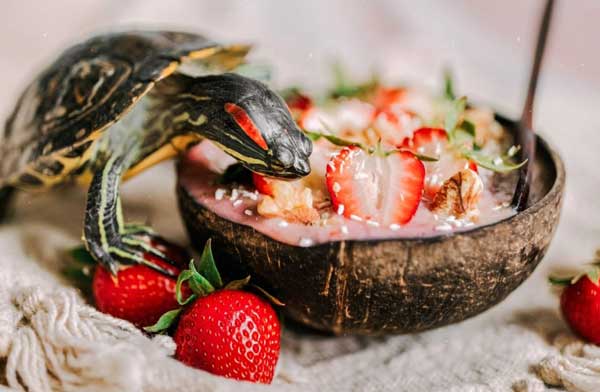
If you give your turtle these fruits, then be sure to limit them to small quantities as they contain sugar and may cause diarrhea.
Animal-based proteins for red-eared sliders
Animal proteins are also important for the good health of your slider. Thankfully, there’s; a variety of prey food items you can give your turtle to obtain these nutrients.
These foods include shrimp, crickets, earthworms, kill, mealworms, daphnia, bloodworms, and aquatic snails, to name but a few. Larger or adult turtles may also eat larger food items such as feeder fish, tadpoles, etc.
You can also feed your turtle live prey. These will give your turtle the chance to hunt them, bringing out their natural hunting instinct while in the wild and keeping him active.
What do baby red-eared slider turtles eat?
However, baby sliders have slightly different dietary requirements compared to adults—they require a high-protein diet. This is to help support their body growth and development.
The protein-rich diet helps the baby turtle build new cells, and tissues, and promotes the healthy development of their organs, muscles, and bones.
Your baby turtle’s shell is still growing and soft, so it requires extra calcium and proteins to help with proper shell formation and hardening.
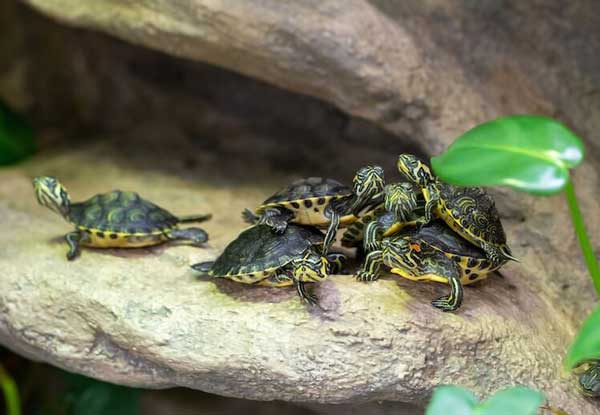
Also, the high protein will help boost the young turtle’s immune system which is still under development, making your turtle less susceptible to various health issues.
But keep in mind that as your turtle grows into adulthood, it will become more of an herbivore, just like the adults, and will require a diet that consists of plant and animal materials.
Thus, you can reduce the protein proportion in its diet and replace it with more veggies as well as other food options we discussed in the previous section.
How often to feed a red-eared slider
How often to feed your red-eared slider will largely depend on its size as well as age. If you own a juvenile slider, then it will eat daily.
For the older adult turtles, you can feed them a good size of food portion every other day (say after every 2-3 days).
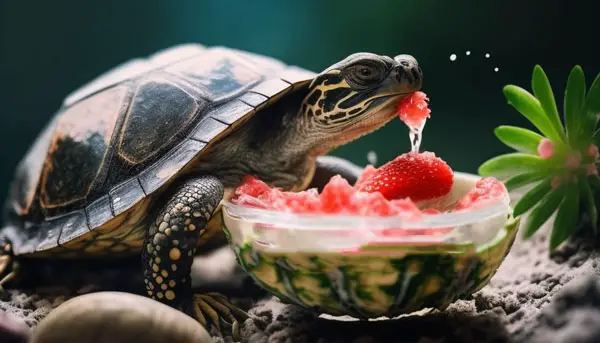
However, some turtle owners prefer picking small amounts of food and feeding the adult turtles daily, which is also ok.
Regardless of the red-eared slider feeding schedule you go with, you should be careful not to overfeed your turtle, especially when it comes to fat and protein-rich foods.
Red-eared sliders, like most other aquatic species, have high appetites and even beg for food. So, you may get tricked into thinking your pet is hungry and feed it more, thereby overfeeding it.
As you continue feeding your turtle, you should also monitor its body for any abnormal changes.
For instance, if you notice skin folding around its legs when it retracts them, it could be a sign that you’re giving it food with higher fat content and you should adjust the diet accordingly.
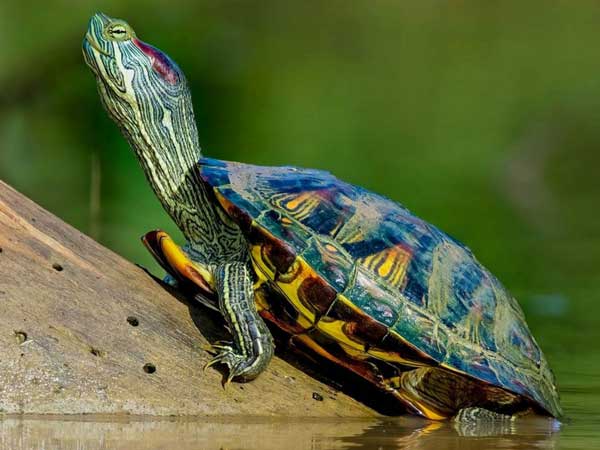
Keep in mind that adult red-eared sliders are more herbivorous, so if your turtle seems hungry, you should give them more plant material and leafy greens.
What foods to avoid for your red-eared slider?
Some foods are poisonous to your red-eared sliders and you should keep them away from your turtle.
Some of the foods to avoid for your red-eared slider include avocado, eggplant, rhubarb, tomato leaves/plant, pomegranate, currants, citrus, bean sprouts, parsnip, mushrooms, onion hot peppers, tobacco leaves, potato leaves, radishes, and gooseberries.
Other foods to avoid include bakery foods, sugary foods, and dairy foods.
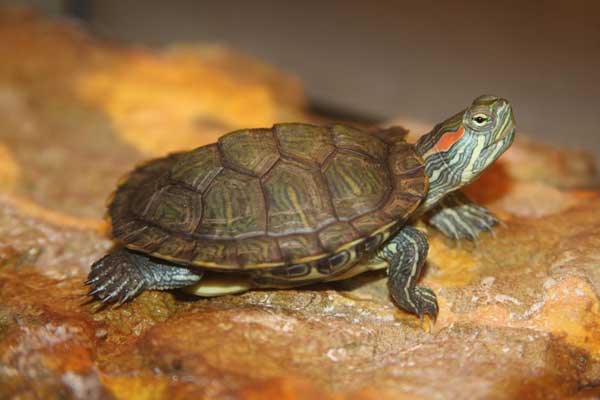
Also, prey caught in the wild or plant materials picked outdoors may contain pesticides, internal parasites, and other harmful organisms. So, you should be careful where you source your turtle foods.
Note that if you’re not sure about the identity of any plant you get from outside, or simply doubt the plant, you should not give it to your turtle to avoid poisoning him.
What nutritional supplements should I give my red-eared slider?
Nutritional supplements may not be necessary as long as you feed your RES a healthy diet and they get enough exposure to UV light to promote vitamin D3 synthesis and proper calcium metabolism.
However, your vet may recommend gigging your turtle vitamin D3 and calcium supplements. These usually come in powder form and you just mix them with your normal turtle food a few times every week. This helps prevent bone and shell-related issues.
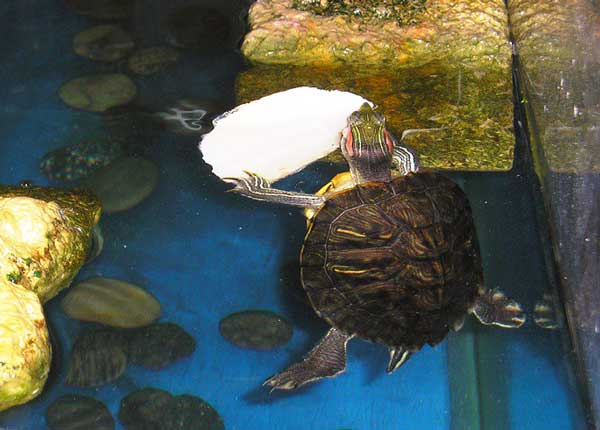
You can also throw a calcium block or cuttlebone into your red-eared slider tank to help supplement its calcium levels and promote its shell growth.
FAQs:
Red-eared sliders in the wild eat both plants and prey food items. Some of the varieties of foods they consume include aquatic plants, crawfish, worms, small fish, carrions, etc.
The quantity of food you give a red-eared slider depends on your individual pet. However, as the rule of thumb goes, you should give your pet as much food as it can consume in about 15 minutes. Feeding your turtle in a separate container makes it easier to monitor how fast it eats and the amount of food it eats.
A red-eared slider can survive for several months (as many as about 3 months) without food, depending on its environment, including whether it has access to clean water and a heat lamp or a basking area. However, it can only go for not more than 7 days without water.
Final Verdict
The red-eared sliders are omnivorous and require both plant and animal matter for a balanced diet. You should feed your turtle a diet that contains 50% plant materials, and 25% animal-based proteins and the rest 25% should go to commercial aquatic turtle pellets.
Follow our tips in the above guide on the type of diet to feed juvenile and adult red-eared sliders, how often to feed your turtle, what foods to avoid, and foods to give to your turtle in moderation, and your turtle will stay healthy, always!
